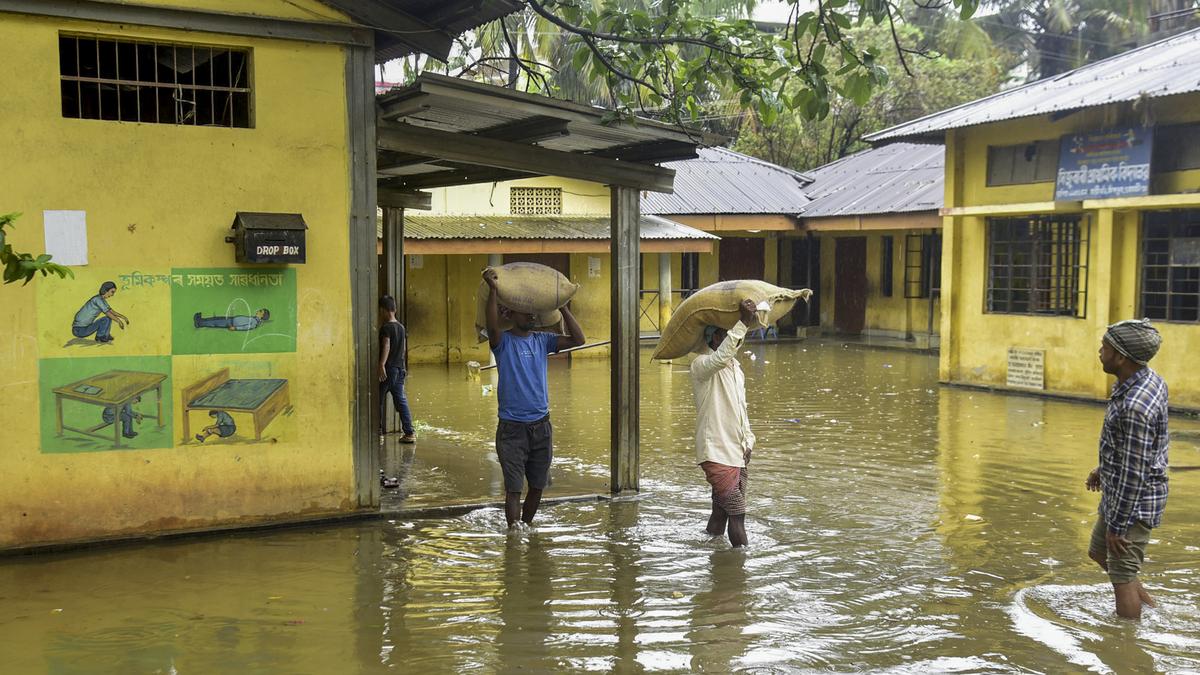
Heavy rain inundates Guwahati, normal life affected
The Hindu
Heavy rainfall in Guwahati causes widespread flooding, traffic jams, and power cuts, prompting government advisories and emergency response.
A spell of heavy rain overnight inundated several roads and residential areas in Assam’s Guwahati, disrupting vehicular movement and causing inconvenience to residents of the city on Tuesday (May 20, 2025).
People were seen wading through knee-deep waters in some areas of the city while the water level reached up to the chest in several localities. Inundation was reported from Zoo Road, Nabin Nagar, Hatigaon, Ganeshguri, Gita Nagar, Maligaon, Hedayetpur, Guwahati Club, Ulubari, Lachit Nagar, Chandmari and Panjabari. The overnight downpour also led to waterlogging in GS Road Jorabat, Tarun Nagar, Jatia, Jyotikuchi, Ghoramara, VIP Road, Rukmini Gaon, Survey and Chatribari, among others.
Many schools, where internal examinations are going on, have announced closure in the morning due to "flooded" campus and roads across the city, as most of the school buses have stopped their services.
A number of vehicles were stuck on the waterlogged roads in several places while ambulances with patients on board became immobile. As the day progressed, traffic jams were reported from almost all localities in the city with vehicles stranded due to waterlogging on roads.
Rainwater accumulated in hundreds of houses in the ‘smart’ city, and there were reports of power cuts in many areas.
The India Meteorological Department (IMD) has predicted inclement weather over Assam for the next 2–3 days, with heavy to very heavy rainfall expected across various parts of the state.
"As per rainfall data recorded on May 20, 2025, several locations in and around Guwahati have already received substantial precipitation, including 112.5 mm at the Guwahati AWS station," an official release said. The weather pattern suggests that both western and southern parts of Assam are likely to witness more intense rainfall episodes over the coming days, potentially reaching up to 200 mm in isolated locations.

The Shakespeare Millennium Club in collaboration with the Annai Velankanni Church (Society of St. Vincent De Paul), conducted a Free Medical Camp on November 23, 2025 at the church premises from 9 am to 6 pm, with Dr. Samundi Sankari and Dr. Divya Sivaraman of Srushti Hospitals, Dr. Sharada L N of Aramba, the Kumaran Dental Clinic, Lychee and Satya Physiotherapy Centre, according to a press release.












